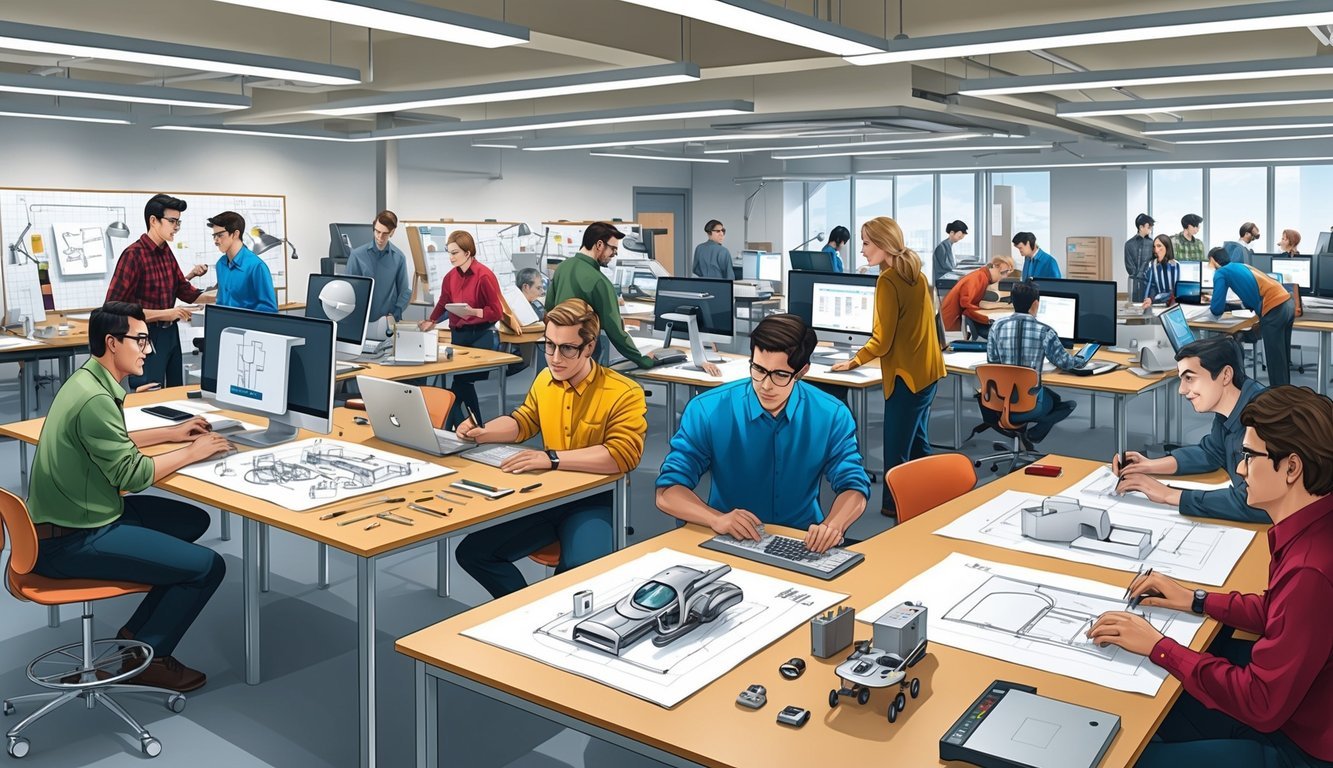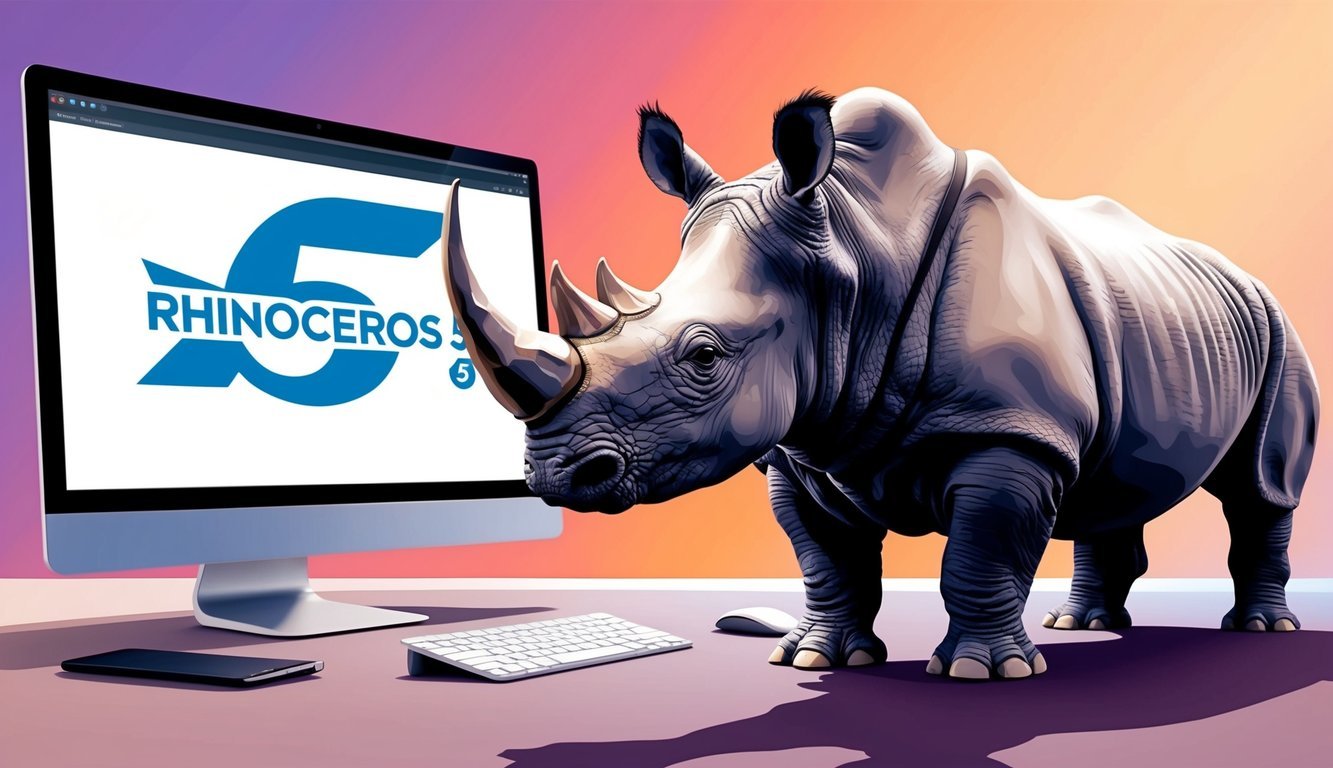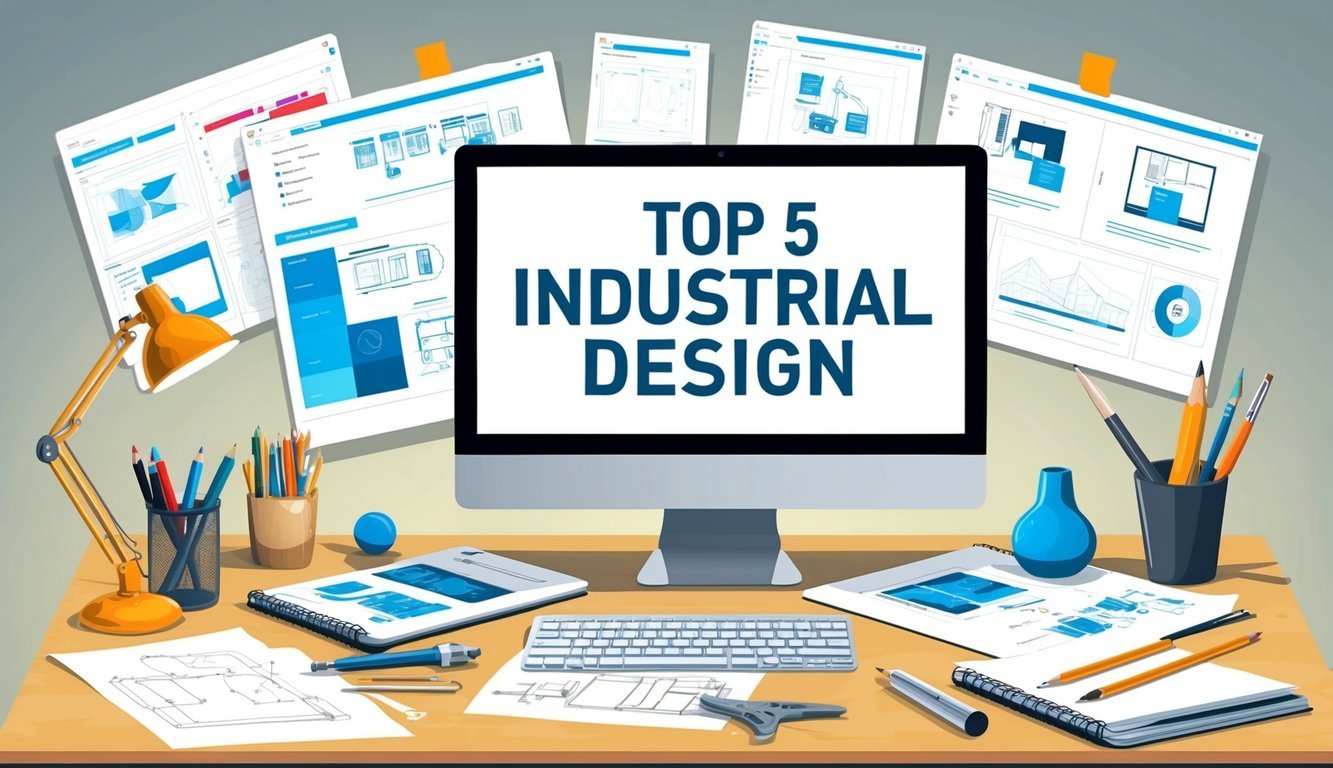**Industrial Design: Where Creativity Meets Functionality**
Industrial design is one exciting field that perfectly melds art, engineering, and real-world problem-solving.
If you love dreaming up products that not only look fabulous but also work like a charm, this might just be the path for you.
From cars zooming down the street to the latest smartphones at your fingertips, industrial designers are the ones shaping the everyday items we rely on.

Choosing the right school for industrial design can really set the tone for your future. **The best industrial design programs provide hands-on experience, valuable industry connections, and top-notch facilities to help turn your brilliant ideas into reality.** Ready to find the right fit? Let’s check out five standout programs that are creating buzz among aspiring designers like yourself!
### 1) SolidWorks
SolidWorks is a big player in the industrial design world.
Think of it as your digital workshop—this 3D CAD software lets you craft detailed product models with ease.
Whether you’re designing machines, gadgets, or even sleek new cars, SolidWorks is a must-have tool.
What I love about SolidWorks is how user-friendly it is.
You can pick up the basics quickly and start creating before you know it.
Its neat features, like the **sheet metal design tools**, allow for precise bends and cuts, making it ideal for those diving into industrial equipment.
Plus, the simulation tools are a game changer.
You can test how your designs perform in real life without having to build a physical prototype first—talk about saving time and money! And if you’re looking to really hone your skills, SolidWorks Ultimate opens up access to thousands of training lessons.
Before long, you’ll be designing like a pro!
### 2) AutoCAD
When it comes to industrial design software, AutoCAD is a household name.
It’s been around for over 35 years, and for good reason.
This versatile software is perfect for both 2D and 3D modeling, allowing you to create detailed plans and designs for a variety of projects.
One of the best parts? You can use AutoCAD on Windows, Mac, iOS, and Android—meaning you can work on your designs from practically anywhere.
However, don’t be surprised if you find it a bit daunting at first.
But don’t fret! There are plenty of **online courses** to help you get up to speed.
AutoCAD’s massive library of parts and tools can save you loads of time on those intricate projects, and it plays nicely with other design software, making team collaborations smoother.
Just remember, practice is key.
The more you use it, the better your designs will become!
### 3) Fusion 360
Fusion 360 is another heavy hitter in the industrial design toolbox, brought to you by Autodesk.
It’s an all-in-one platform that combines 3D design, modeling, and manufacturing features, making it super convenient for realizing your creative visions.
This cloud-based software means you can access your work from anywhere, and it’s beginner-friendly.
Yet it also boasts advanced features for those more complex projects.
Plus, with its **integrated CAD, CAM, and CAE capabilities**, you can design, test, and prep for manufacturing all in one nifty package.
Fusion 360 is constantly updated too, so you’ll always have the latest tools at your fingertips, keeping your designs fresh and exciting.
### 4) CATIA

CATIA is a powerhouse in the realm of industrial design software, developed by Dassault Systèmes.
It’s particularly favored in aerospace and automotive industries for its incredible 3D modeling capabilities.
What makes CATIA stand out is its **unified workflow**.
You can seamlessly transition from quick sketches to detailed 3D models, which is fantastic for big projects that involve many moving parts.
It’s like having a Swiss Army knife for design!
However, I’ve got to warn you—CATIA can have a steeper learning curve than some of its rivals.
It’s packed to the brim with features, which is a plus, but you might need extra time to get the hang of it.
If you’re into cars or planes, though, CATIA is definitely worth your while!
### 5) Rhinoceros (Rhino)

Rhinoceros, or Rhino as it’s commonly called, is a favorite among industrial designers for creating complex shapes and surfaces.
Its intuitive interface makes it easy to pick up, even if you’re a newbie to 3D modeling.
Rhino is particularly known for its **NURBS modeling capabilities**, allowing for smooth and precise curves.
This makes it ideal for everything from product design to furniture and even architectural work.
One of Rhino’s best features is its flexibility throughout the design process.
You can tackle everything from quick sketches to detailed models, and it integrates smoothly with other software, making file sharing a breeze.
Plus, the **Grasshopper** plugin lets you dive into parametric design without needing to code—a real bonus!
### Key Elements of Industrial Design

At its core, industrial design is about blending art, science, and engineering to create products that are not just beautiful but also functional.
It’s all about solving real-world problems and improving lives through thoughtful design.
#### User-Centered Approach
Putting the user at the center of your design is like having a compass guiding you.
Start with research—talk to potential users and observe how they interact with similar products.
This insight helps you identify pain points and refine your solutions.
Next up? Create prototypes and test them with real users.
Gather feedback, make adjustments, and keep tweaking until you’ve got a design that truly resonates with those who’ll use it.
Remember, great design isn’t just about looking pretty; it’s about ease and enjoyment.
#### Sustainability in Design
These days, you can’t overlook the environmental impact of what you create.
Sustainable design is huge in the industrial design world.
Think about your materials—can you choose eco-friendly options that last? And when it comes to manufacturing, how can you minimize waste?
Long-term thinking is key too.
Design products that are easy to repair or recycle.
Creating durable items that won’t end up in landfills is all part of the sustainability equation.
Some forward-thinking designers are even experimenting with biodegradable plastics or recycled materials—why not think outside the box?
#### Aesthetics and Functionality
In industrial design, striking the right balance between aesthetics and functionality is crucial.
What does your product need to accomplish? How can you enhance its usability, durability, and efficiency before focusing on how great it looks?
Once you’ve got functionality down, you can play around with colors, textures, and shapes.
Creating something visually appealing can not only attract attention but also enhance usability.
Keep in mind, a well-designed product is often more enjoyable and efficient to use, so make those aesthetics an integral part of your process.
### The Impact of Industrial Design

Industrial design touches nearly every aspect of your daily life.
If you think about your smartphone or your favorite coffee maker, those nifty products were carefully crafted by talented designers.
Good design simplifies your life; it saves time and reduces hassle.
Just think about those frustrating products that make you want to throw them out the window! Now imagine everything working seamlessly and intuitively—life would be a breeze.
Plus, industrial design plays a significant role in the economy.
Well-designed products often fly off the shelves, creating jobs and boosting businesses.
Companies like Apple have shown us how design can set them apart from the crowd.
Designers also tackle important global challenges.
They create sustainable products for a healthier planet and assistive devices that promote accessibility.
Your journey in industrial design could truly make a difference!
Moreover, industrial design shapes culture.
Iconic designs can transcend time, influencing trends and becoming beloved symbols in society.
As a designer, you could be the one crafting the next must-have item or timeless classic.
The influence of industrial design extends far beyond products; it impacts services, experiences, and systems.
By learning design thinking, you’ll gain problem-solving skills beneficial in many life areas.
### Frequently Asked Questions

Industrial design programs can offer thrilling opportunities for creativity and learning.
Many top schools across the globe provide unique experiences that can lead to success in this field.
#### What schools are leading the charge for industrial design worldwide?
You can’t talk about industrial design without mentioning the **ArtCenter College of Design** in California.
They team up with industry giants to offer real-world projects, which is pretty cool! Another notable mention is the **Rhode Island School of Design (RISD)**, known for shaping some of the best talent in the field.
#### Which American universities have top-notch industrial design programs?
The **U.S. is home to some amazing industrial design programs**.
For instance, Virginia Tech offers the Industrial Design Excellence in Thesis Award for outstanding senior projects.
Talk about a great way to boost your resume!
#### What are the best industrial design schools in Europe?
Europe’s got its fair share of incredible design schools.
The **Royal College of Art** in London tops the list, along with the **Design Academy Eindhoven** in the Netherlands.
These institutions encourage creativity and innovation.
If textiles are your passion, they also host some of the **top textile design programs** globally.
Graduates often land roles with leading brands or even start their own innovative studios!
#### What schools in California are great for industrial design?
California is a hotbed for design schools. **ArtCenter College of Design** in Pasadena is super popular, and **San Francisco State University** also has a solid offering.
Being in such proximity to tech companies and startups is a huge plus.
#### What software do pros use for epic designs?
When it comes to software, pro designers lean on SolidWorks and AutoCAD.
Fusion 360 and CATIA also have their fans, and let’s not forget Rhinoceros (Rhino) for that 3D modeling magic.
Getting comfy with these tools can help you create fabulous designs.
#### What else do industrial designers do apart from designing?
Being an industrial designer isn’t just sketching cool ideas.
It involves prototyping and testing products.
You could find yourself chatting with customers or collaborating with engineers, mixing creativity and problem-solving throughout your workday.
Ready to jump into the world of industrial design? Your journey could lead to creating the next big thing that makes life a little easier for everyone!

